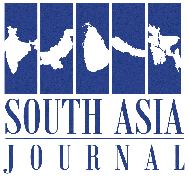
China currently possesses at least 600 nuclear warheads, which is an increase of about 100 a year since 2023, the Stockholm International Peace Research Institute (SIPRI) estimates, while the number of warheads owned by other nuclear states remained relatively stable.
Hans Kristensen, associate senior fellow with SIPRI’s Weapons of Mass Destruction Programme, said that China’s nuclear buildup involved a broad range of activities.
“We see important modernization in the nuclear weapons industry, the factories, both in the reprocessing facilities and also in the simulation facilities that are used to check the weapons, to certify the weapons, and potentially develop new ones,” said Kristensen, who is also the director of the Nuclear Information Project at the Federation of American Scientists.
Such moves have stirred up unease in other countries, especially the U.S., with President Donald Trump insisting since his first term on bringing China into nuclear arms reduction talks, which had traditionally been between America and Russia.
Guo Jiakun, a spokesperson for China’s foreign ministry, on Monday declined to comment on the report but emphasized: “China has always adhered to the nuclear strategy of self-defense, always maintained its nuclear forces at the minimum level required for national security, and not participated in an arms race.”
He said China was unique with its “policy of not using nuclear weapons first at any time and under any circumstances, and promises unconditionally not to use or threaten to use nuclear weapons against non-nuclear weapon states and nuclear-weapon-free zones.”
India also appears to be putting more efforts into developing longer-range weapons capable of reaching targets throughout China, SIPRI said in its latest annual assessment of the state of armaments, disarmament and international security.
SIPRI stated that Trump’s return to the White House has added to uncertainty about global stability. Worries over Washington’s security commitments to its Asian allies have prompted fresh debates, including in Japan and South Korea, about how nuclear deterrence should be maintained for regional stability.
Kristensen noted that the era of reductions in the number of nuclear weapons, which had lasted since the end of the Cold War, is coming to an end — even as 2025 marks the 80th year since the atomic bombings of Hiroshima and Nagasaki.
“Instead, we see a consistent trend that the number of nuclear weapons for military use is increasing again,” he said. “[And] we see, across the board, all the indicators that tell us that a new nuclear arms race is emerging.”
Just last week, Israel attacked Iran’s nuclear facilities a day after the International Atomic Energy Agency’s board declared Iran to be in breach of its nuclear nonproliferation obligations.
The recent conflict between India and Pakistan, two of the nuclear weapon states, also served as a reminder that the two countries remain “one of the most important potential flash points for nuclear use,” according to Kristensen.
The article appeared in the asia.nikkei

